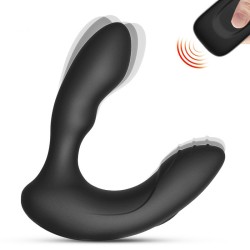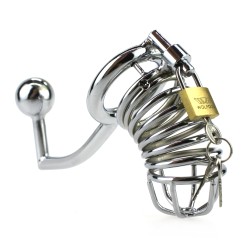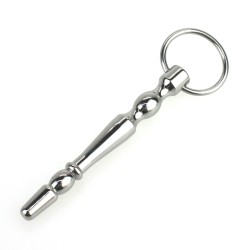Bdsm Sex Toys Store
It’s strong  , supports weight perfectly, and offers so much flexibility for various positions. Honestly, I was skeptical at first, but this factor blew my thoughts. Toys should all the time be cleaned before and after each use to stop micro organism from building up. “You cannot really go mistaken with soap and warm water,” says Engle. While it would not come with a dildo included, the stretchable, elastic O-ring can fit quite a few dildos of all shapes and sizes.
, supports weight perfectly, and offers so much flexibility for various positions. Honestly, I was skeptical at first, but this factor blew my thoughts. Toys should all the time be cleaned before and after each use to stop micro organism from building up. “You cannot really go mistaken with soap and warm water,” says Engle. While it would not come with a dildo included, the stretchable, elastic O-ring can fit quite a few dildos of all shapes and sizes.
Nora is a rabbit vibrator combining G-spot and clitoral stimulation for a powerful, dual-sensation expertise. Its rotating head provides focused G-spot therapeutic massage, whereas the flexible vibrating arm caters to the clitoris. Like Max 2  , Nora connects to the Lovense Remote app, allowing customized vibration patterns and long-distance control. When synced with Max 2, both toys reply to every other’s actions, creating a singular interactive experience for couples. For these seeking to experiment with anal stimulation Aqua Shot Shower Enema Cleansing System, we offer a number of anal sex toys, including butt plugs, prostate massagers, and anal beads.
, Nora connects to the Lovense Remote app, allowing customized vibration patterns and long-distance control. When synced with Max 2, both toys reply to every other’s actions, creating a singular interactive experience for couples. For these seeking to experiment with anal stimulation Aqua Shot Shower Enema Cleansing System, we offer a number of anal sex toys, including butt plugs, prostate massagers, and anal beads.
Not only will this make your clit really feel cozy, however the heating capabilities can be used for temperature play in addition to warming your water-based lube or therapeutic massage oil. Adding to the hot-hot-hot expertise of this toy is the very fact it offers clitoral stimulation via vibration and G-spot stimulation via rotation. Introducing the Ohwii Horror Design Bone Pattern Women Long Stockings, a collaborative project between pleasure product firm Biird (best identified for his or her clit sucker, the Cuddly Bird) and the sex educator Edwige Infirmière (@wicul on Instagram). Best  , created from iridescent glass that is non-breakable and body-safe, the Ohwii presents all of the perks of glass sex toys Cheap Thrills The Farm Girl PureSkin Stroker, such as temperature adaptability, heft, and lubricant compatibility. Clip this in your partner during intercourse for some dual stimulation, delivering clitorial and G-spot pleasure that you could additionally really feel. Totally waterproof, it is a great toy to maintain in the shower or bathtub.
, created from iridescent glass that is non-breakable and body-safe, the Ohwii presents all of the perks of glass sex toys Cheap Thrills The Farm Girl PureSkin Stroker, such as temperature adaptability, heft, and lubricant compatibility. Clip this in your partner during intercourse for some dual stimulation, delivering clitorial and G-spot pleasure that you could additionally really feel. Totally waterproof, it is a great toy to maintain in the shower or bathtub.
If you carry up the clitoral hood and expose the clit, the direct hypersonic pulses or vacuum suction will provide intense and direct stimulation. It is a popular means for women to encourage natural vaginal lubrication and improve libido for those with a low sex drive. Turbo Accelerator Bullet – $36The most powerful vibrator ever made. Pulse Touch G Spot Rabbit Dildo – $99Rechargeable clit vibrator with 7 vibrating modes and a pulsating dildo for G-spot stimulation.
Our top-shelf assortment of penis pumps is all about efficiency, pleasure, and reclaiming management. They’re sleek, effective tools designed that can help you obtain firmer, longer-lasting erections whereas giving your confidence a real kick in the pants. For others, it’s about chasing that edge—better sensitivity, improved blood move, and, let’s be trustworthy, the psychological increase that comes with feeling more in control of your own pleasure. Whatever the rationale  , these intercourse toys for males aren’t just functional—they’re thoughtfully engineered.
, these intercourse toys for males aren’t just functional—they’re thoughtfully engineered.
Vixskin Johnny’s versatility went past the versatile shaft (seen in the picture below), which made it easy to control the angles. We had been excited to play with the temperature-responsive silicone materials as a outcome of it made the expertise ultra-realistic. Whether you need a cool or heat mix of sensations, you can submerge the dildo within the water beforehand. In addition, the boilable materials was simple to wash and keep. Although Sync Lite is produced from body-safe silicone materials, it’s not waterproof. People (like me) who enjoy sex in the bathe is not going to love the constraints of a splashproof vibrator.
It’s essential to ensure that giving such a present is suitable and consensual, respecting the recipient’s boundaries and preferences. Lovense’s toys are top-tier options for long-distance couples who need to connect higher sexually, and this is amongst the best ones of their lineup. It stimulates the clitoris and G-spot concurrently – or separately  , when you favor – for intense blended pleasure. I particularly love the flexible neck on this toy, as it allows for a custom fit that hits your spots just right. Men, you can also enhance your pleasure with the right products! Think intercourse toys for him similar to masturbators, pumps, cock rings, and extra.
, when you favor – for intense blended pleasure. I particularly love the flexible neck on this toy, as it allows for a custom fit that hits your spots just right. Men, you can also enhance your pleasure with the right products! Think intercourse toys for him similar to masturbators, pumps, cock rings, and extra.
Also, if discretion is critical Wolf Tooth Chastity Cage With Penis Plug, on-line shopping is the way to go. No want for your neighbors, roommates, or family members to know what you are stashing in your bedside drawer. Besides, most retailers ship merchandise in generic-looking packaging. Unfortunately, not all do, so if privateness is an absolute need, you’ll find a way to always attain out of the store’s customer support to verify. An ideal choose for novices, Aer makes use of stress wave know-how to imitate the flutter of a tongue and the suction of a mouth for a very knee-buckling experience. We’d advocate getting the sexy instances started by shopping this list together with your partner.
